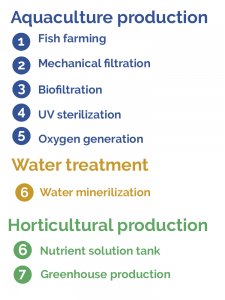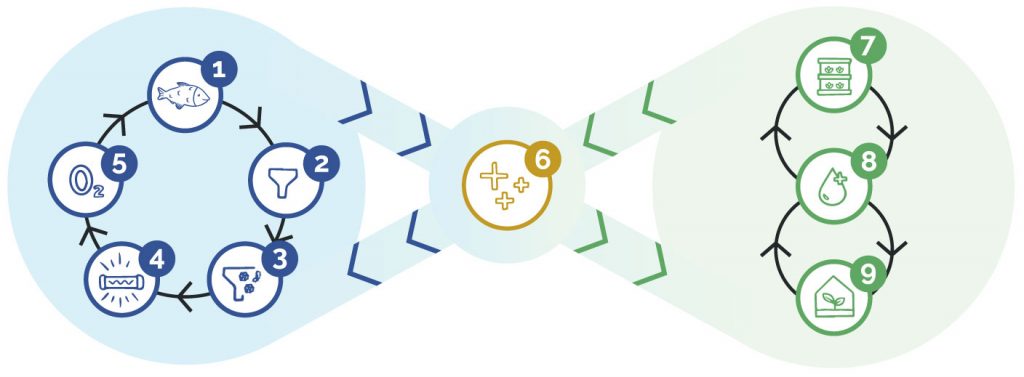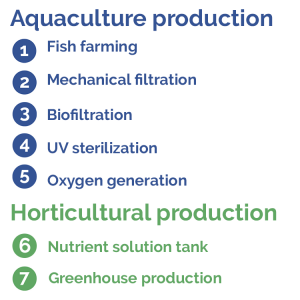Commercial aquaponics
Aquaponics is the symbioses between aquaculture – fish production – and hydroponic – plant culture.
Aquaponics originates from integrated agriculture methods used for centuries. Integrated agriculture is a set of practices that aims to imitate nature’s systems. Amongst the most known examples are the Aztecs that cultivated their crops on Chinampas, land parcels surrounded by shallow canal networks where fishes were bred. Another example is in South Asia, where flooded fields were sowed with fish eggs and different Ouest-African groups that raised livestock on pilots above the water where a new ecosystem would prevail. Commercial aquaponics has gained popularity over the last 30 years due to the contribution of scientific studies, technological advances, the need to make agriculture more respectful to the environment, and the growing interest of populations for local produce.
Commercial aquaponics vs. domestic aquaponics
There are various types of aquaponics and multiple technologies for each culture. Since its beginning, ÉAU specializes in decoupled aquaponics systems, the foundation for commercial aquaponic farms.
What is commercial aquaponics ?
The aquaponics system consists of three interdependent sections: aquaculture production, water treatment, and horticulture production. The commercial aquaponics system offers the option to modify the parameters of each section – aquaculture, water treatment, and horticulture -. Thus allowing the needs of aquatic organisms, bacteria, and plants to be met, without causing negative repercussions to other species in the system.

- Water economy
- Reduces the use of pesticides
- Diversifies food production: fish and plants
- Better productivity thanks to enhanced aquaculture and horticultural environment control
- Coldwater fish production combined with warm water plant culture
What is domestic aquaponics?
Domestic aquaponics systems are composed of two interdependent sections: aquaculture and hydroponic. Water circulates between the aquaculture and horticultural area

- Local agriculture promotion
- Sharing and developing skills related to agriculture, pure and applied science
- Small scale production
- Proximity to communities
In sum,
Domestic aquaponics is an excellent learning tool and a small-scale production technology. Commercial aquaponics allows for an optimal yield and is ideal for medium to large-scale environmentally responsible productions.To learn about the benefits of commercial aquaculture click on Why choose aquaponics?
To learn more about the services we offer click on Our services